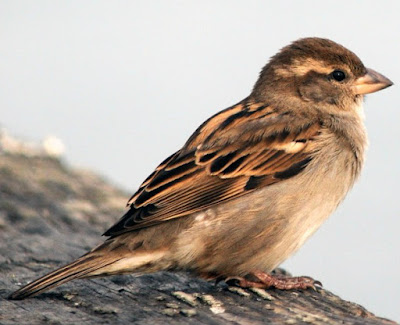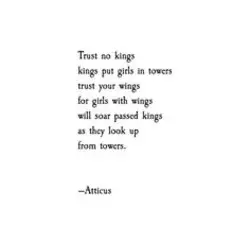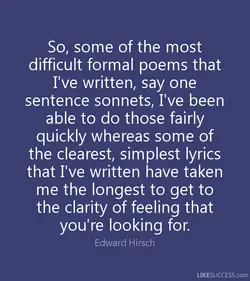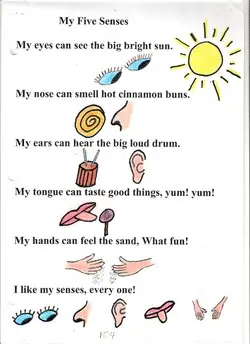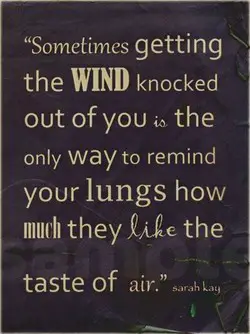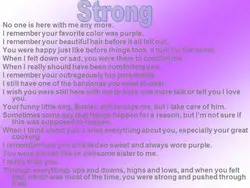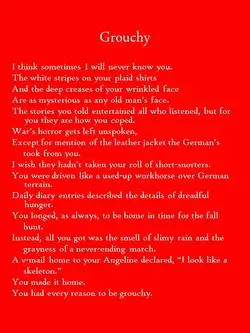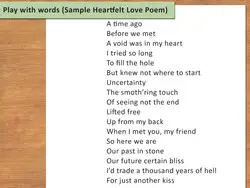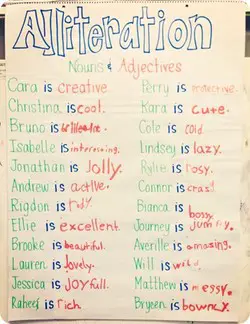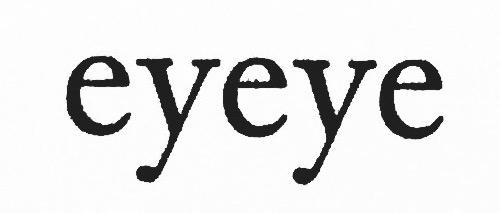November 4, 2013 by Linda Frances Lein
Since I sat in Miss Eckman’s 7th Grade English classroom, I’ve been fascinated with the imagists and one-sentence poems.
The imagists were American and British writers in the 20th Century who advocated free verse, common use of language, and concrete images in their writing. Their poems are like snapshots – photographs of a scene. Among my favorite imagists is William Carlos Williams, a medical doctor and poet. Probably his most famous one-sentence poem is “The Red Wheelbarrow.”
The Red Wheelbarrow
by William Carlos Williams
so much depends
upon
a red wheel
barrow
glazed with rain
water
beside the white
chickens
Another leader in the imagist movement is Ezra Pound. One of his well-known, one-sentence poems is “In a Station of the Metro.”
In a Station of the Metro
by Ezra Pound
The apparition of these faces in the crowd;
Petals on a wet, black bough.
It’s even possible to write a one-sentence poem that has multiple stanzas. Linda Pastan did that in her poem “The New Dog.”
The New Dog
by Linda Pastan
Into the gravity of my life,
the serious ceremonies
of polish and paper
and pen, has come
this manic animal
whose innocent disruptions
make nonsense
of my old simplicities—
as if I needed him
to prove again that after
all the careful planning,
anything can happen.
Learning to write a one-sentence poem with a strong pictorial images teaches the writer to make every word count, to be selective about the words that are included, and to tighten the language to the bare minimum.
Do you have a favorite one-sentence poem? Have you thought about writing one-sentence poems?
Works Cited
Pastan, Linda. “The New Dog.” The Cortland Review. 1999. Web. 4 Aug. 2013.
Pound, Ezra. “In a Station of the Metro.” Poetry Foundation. 2013. Web. 4. Aug. 2013.
Williams, William Carlos. “Red Wheelbarrow.” Poetry Foundation. 2013. Web. 4 Aug. 2013.
A line will take us hours maybe;
Yet if it does not seem a moment’s thought,
Our stitching and unstitching has been naught.
—William Butler Yeats
One-sentence poems are conceptually
interesting and a challenge to write. The title, however, is a bit misleading.
One-sentence poems are longer than a typical sentence, they may even be several
stanzas long. Importantly, they are not simply poems without punctuation. In
fact, they employ all the standard rules of punctuation, capitalization, and
grammar, and all of poetry’s distinguishing features: figures of speech,
imagery, and sound values. However, because these poems are one-sentence but several
poem-lines long, they must be carefully constructed and go a long way toward
encouraging the writer to make every word count, to tighten language, and to
focus on details to create a sense of immediacy and “presence.”
Unlike prose that moves freely
from paragraph to paragraph, poetry is composed in lines. Lineation in poetry
refers to the way lines break in definite places (decided upon by the poet). Lines
are elements of composition that impact meaning and sound. It isn’t necessary
to end a line of poetry with a terminal punctuation mark, and, poets often use
enjambment (the continuation of a sentence without a pause beyond the end of a
line or stanza, without terminal punctuation at the end of the line).
In a one-sentence poem, we’re not talking about one line. The poems may be a number of lines long, but is composed as a single sentence. The poet
simply continues the main thought from line to line using such punctuation
marks as commas, semi-colons, parentheses, dashes, and colons and moving from
line to line without any terminal punctuation. The idea is not to create a long
run-on sentence but, rather, to a craft a poem that flows seamlessly from line
to line.
Take, for example, Galway Kinnell’s amazing poem «Saint Francis and the Sow»:
Saint Francis and the
Sow
by Galway Kinnell
The bud
stands for all things,
even for those things that don’t flower,
for everything flowers, from within, of
self-blessing;
though sometimes it is necessary
to reteach a thing its loveliness,
to put a hand on its brow
of the flower
and retell it in words and in touch
it is lovely
until it flowers again from within, of
self-blessing;
as Saint Francis
put his hand on the creased forehead
of the sow, and told her in words and in
touch
blessings of earth on the sow, and the sow
began remembering all down her thick length,
from the earthen snout all the way
through the fodder and slops to the spiritual
curl of the tail,
from the hard spininess spiked out from the
spine
down through the great broken heart
to the sheer blue milken dreaminess spurting
and shuddering
from the fourteen teats into the fourteen
mouths sucking and blowing beneath them:
the long, perfect loveliness of sow.
And
this wonderful example by Edmund Charles Baranowski:
Death Sentence
By
Edmund Charles Baranowski
The scent of death lingers
in the air
from the rotting corpse
of a road kill deer,
laying near the curb,
just out of town,
on the corner of
the cemeterial grounds;
decaying quickly
in the summer’s heat;
displaying death
on a one way street;
at the base of the sign post,
below the sign
that says «one way»
not unlike time.
Guidelines:
1. Think for a while about the
subject of your one-sentence poem, and jot down some ideas, images, and
phrases.
2. Remember that crucial in
creating one-sentence poems, are strong pictorial images and images that appeal
to the senses and emotions.
3. Don’t try to write a long
one-sentence poem for starters. Begin with a shorter poem, no more than 12-15
lines.
Tips:
1. Once you have an idea for your subject, begin writing.
2. Be especially aware of how you break your lines (and
ultimately stanzas).
3. Use traditional punctuation throughout your poem but
remember that there should be no terminal punctuation except at the end of your
last line.
4. Work on sound: create harmonic textures through
alliteration, assonance, consonance, and internal rhyme.
5. Pay attention to syntax and pacing.
6. Control subject and tense.
7. Work with enjambments.
8. As always, end with a dismount that has a “punch.”
Examples:
1. The Red Wheelbarrow
by William Carlos Williams
so much depends
upon
a red wheel
barrow
glazed with rain
water
beside the white
chickens
by Linda Pastan
Into the gravity of my life,
the serious ceremonies
of polish and paper
and pen, has come
this manic animal
whose innocent disruptions
make nonsense
of my old simplicities—
as if I needed him
to prove again that after
all the careful planning,
anything can happen.
3. Bright Star, Would
I Were Stedfast [sic]
By John Keats
Bright star, would I were stedfast as thou art—
Not in lone splendour hung aloft the night
And watching, with eternal lids apart,
Like nature’s patient, sleepless Eremite,
The moving waters at their priestlike task
Of pure ablution round earth’s human shores,
Or gazing on the new soft-fallen mask
Of snow upon the mountains and the moors—
No—yet still stedfast, still unchangeable,
Pillowed upon my fair love’s ripening breast,
To feel for ever its soft fall and swell,
Awake forever in a sweet unrest,
Still, still to hear her tender-taken breath,
And so live ever—or else swoon in death.
4. «Piedra de Sol»
(Sunstone) by Octavio Paz is a 584-line one-sentence poem that ends with a
colon—making it a 584-line incomplete sentence.
Read “Piedra de Sol” here (original and translation): https://www.sunstonefit.com/about/poem
Click here to visit
an online journal that publishes one-sentence poems:
1000, images about films to see before you die on …
pinterest.com
Презентация на тему: «ЭССЕ? Я, Учитель, и этим горжусь …
myshared.ru
So, some of the most difficult formal po by Edward Hirsch …
likesuccess.com
no. 4: My Five Senses, Word sentences, Sentence for …
pinterest.com
33 One Sentence Inspirational Quotes, Poetry, Pinterest …
pinterest.com
#WritingPrompt: 15, Sentence Portrait, JeriWB Word Bank
jeriwb.com
#WritingPrompt: 15, Sentence Portrait, Word Bank …
jeriwb.com
How to Write a Rhyming, : 12 Steps (with, …
wikihow.com
We made two word, iteration sentences using nouns …
pinterest.com
Table of Contents
- How do you use the word poetry in a sentence?
- Are there sentences in poems?
- What is a sentence for poetic?
- What does a free verse poem look like?
- What is a short poem called?
- Why are poems free verse?
- What is an ode to someone?
- Do odes rhyme?
- What do all odes have in common?
- How many types of odes are there?
- What is an elegy example?
- How is an ode written?
A poem or stanza with one line is called a monostich, one with two lines is a couplet; with three, tercet or triplet; four, quatrain.
How do you use the word poetry in a sentence?
Poetry in a Sentence 🔉
- Dr. Seuss’s books are some of the best current examples of rhyming poetry. 🔉
- While studying poetry in his literature class, Stephan learned about rhythm and rhyme. 🔉
- The book of poetry included several long poems and ballad styled poems set to music. 🔉
Are there sentences in poems?
If you are writing a poem in a standard form such as a sonnet, your choices about line length are somewhat restricted by the rules of the form. But you still have to decide how to fit the ideas and sentences of your poem over the lines. You can decide to use short lines or long lines, or to vary the length.
What is a sentence for poetic?
Poetic sentence example. Maybe it was poetic justice that her soul was doomed. It shows me that I could express my appreciation of beautiful and poetic ideas in clear and animated language.
What does a free verse poem look like?
Free verse is here defined as a poem with no set meter or verse that mimics natural speech patterns. Free verse poems can be short or long, contain sporadic rhymes or none at all, and be conveyed in spoken or written mediums.
Tanka. The tanka (which means “short poem”) is a Japanese form that is five lines. The first and third lines have five syllables (in the English version of the form) and the other lines have seven syllables each. The subject of the poem can be nature, as it generally is for haiku, but this isn’t required.
Why are poems free verse?
At its simplest, free verse poetry is poetry without a set form, so it doesn’t have a repeated rhythm or rhyme scheme. Because poets using free verse aren’t following certain rules when they write, they have the freedom to choose whatever words, sounds, and shapes they want in their poetry.
What is an ode to someone?
An ode is a kind of poem, usually praising something. An ode is a form of lyric poetry — expressing emotion — and it’s usually addressed to someone or something, or it represents the poet’s musings on that person or thing, as Keats’ ode tells us what he thought as he looked at the Grecian urn.
Do odes rhyme?
Modern odes are usually rhyming — although that isn’t a hard rule — and are written with irregular meter. Each stanza has ten lines each, and an ode is usually written with between three and five stanzas.
What do all odes have in common?
It has a serious subject. It has an elevated style (word choice, etc.). It usually has an elaborate stanza pattern. The ode often praises people, the arts of music and poetry, natural scenes, or abstract concepts.
How many types of odes are there?
three
What is an elegy example?
An elegy is a form of poetry that typically reflects on death or loss. For example, Walt Whitman’s elegy “O Captain! My Captain!” memorialized President Abraham Lincoln shortly after his assassination: O Captain! my Captain!
How is an ode written?
An ode is a lyrical poem that expresses praise, glorification, or tribute. It examines its subject from both an emotional and an intellectual perspective. Classic odes date back to ancient Greece, and they contain three sections: a strophe, an antistrophe, and an epode—effectively a beginning, middle, and end.
The process of writing a one-word poem on the page involves playfulness, along with the willingness to take risks with imagination—much like a toddler who scribbles letters for the first time on paper, using the crayon to draw what a word might look like, and creating language outside the boundaries of standard writing. In a way, to think like a child who is creating his first word on paper is to engage in a true act of writing. Because to write means to link the brain, the eyes, the hands simultaneously: it’s that coordination of the poet’s artistic vision and creative action, which can reveal a word’s identity through its image. In that moment, the poet writes mum in cursive and watches its shape flow like a wave across the page, or gig, to notice how the lower loop of g shapes itself into an earlobe. Through this practice, the poet guides his hand through a graphological meditation which then becomes an artistic mediation between self and page. This is when he reimagines language, reimagines the relationship of writing and experience to move toward a literary moment. Much like that moment when discovering a new word like “nefelibata,” that feeling of surprise and curiosity one has toward its spelling and meaning.
Let’s look at a one-word poem that is meant to be seen rather than read, a poem that’s meant to be viewed as image rather than text. In the poem “eye” by Aram Saroyan, he adds an additional “y” and “e” to the word to enact a sense of play and inventiveness. And in a way by adding extra letters the word visually becomes what it means:
At first glance this one-word poem appears disorienting; it takes a second for our eyes to adjust to it. Perhaps it’s because as viewers the extra y and e skew our perception a little. So we find ourselves scanning the word back and forth as if in a REM (Rapid Eye Movement) state. But what makes this poem effective too is its play on a palindrome. A palindrome is a word or sentence that reads the same forward and backward. Some examples are “toot,” “minim,” “never odd or even,” or “draw o coward.” In his one-word poem, Saroyan gets us to understand his interaction with language. His use of a palindrome gets us, as readers, to look closely at language, to literally eye the word, but then he adds those extra letters and suddenly the poem becomes visible as an image. In Ian Daly’s essay, “You Call That Poetry?!” Saroyan says, “I got intrigued by the look of individual words; the word ‘guarantee,’ for instance, looks to me a bit like a South American insect.” The one-word poem gets us to think about the word as picture and reminds us, as poets, that to develop the mind’s eye we must open ourselves up to seeing language and to feel the energy of a letter. The origin of the A, for example, derives from a pictogram dating back to the 11th century in the Middle East. The A is an ox-head, and if you rotate it until its stems point upward you will see the ox’s muzzle in the area between the apex and crossbar. Once we are aware that the letter is a picture, it’s up to us, as writers, to imagine the ox ploughing the field of the page, getting it ready for us to plant and expand our imagination.
Originally Published: November 30th, 2015
Poet Orlando White is from Tólikan, Arizona. He is Diné of the Naaneesht’ézhi Tábaahí and born for the Naakai Diné’e. White earned a BFA from the Institute of American Indian Arts and an MFA from Brown University. He is the author of LETTERRS (2015) and Bone Light (2009), a collection of…

